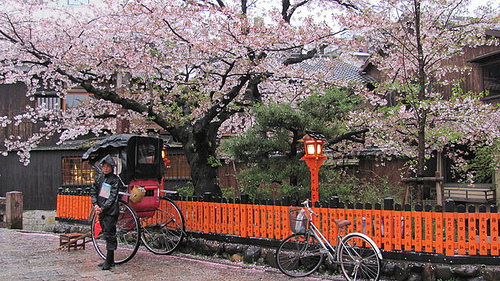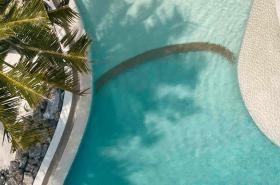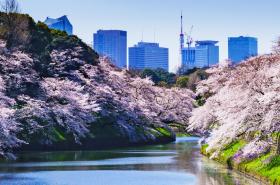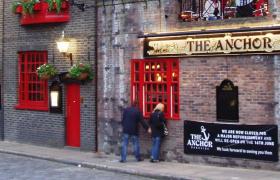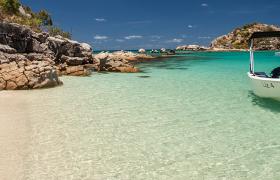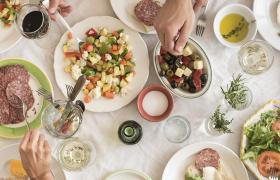Sonia Jones from Noller & Turner Travel Associates has just returned from escorting a tour group to Japan to experience the wonder of the cherry blossoms. With her first-hand knowledge, her Japanese language skills and extensive experience as a travel agent, Sonia’s personal itinerary took the group into “Hidden Japan” for a truly magical holiday.
This “Hidden Japan” itinerary focused on Southern Japan and included stays in Osaka, the prefecture of Kumamoto (on the island of Kyushu), Hiroshima and concluded in the Imperial capital of Kyoto.
Our first stop was Kumamoto Castle. Seeing cherry blossoms was the main objective of this tour, so you can imagine my delight (and relief) as we arrived at the castle entrance and were immediately surrounded by blossoms. The breeze was tossing the petals about in the air and they were drifting down like snowflakes, covering the ground in a fine, pink dusting. The delicate flowers contrasted with the dark exterior of the castle beautifully.
We left the urban sprawl of Kumamoto City and headed into the countryside to the top of the crater of Mt Aso. This volcano has a circumference of 120km and a population of 8,0000 people living within its crater. These days, there are five distinct mountain peaks, never-ending hot springs and an active crater called Nakadake. If the wind is right, you can access the top of Nakadake and look directly into the crater, filled with 60 degree mint-coloured water and spewing forth a mixture of steam and sulphur.
Our accommodation for the night was in Aso township – located on the floor of the crater in a Japanese Inn, called a 'ryokan'. In this part of the country where foreign tourists are rare, you are in for a true Japanese immersion experience. Public baths (divided into male and female), futon mattresses on the floors for sleeping, no chairs, fish and rice for breakfast, and Japanese gowns known as yukata to wear to dinner are all part and parcel of a stay in Aso. If you love authentic experiences, are willing to give anything a go, then you will absolutely love this. The blossoms in this area were spectacular – slightly cooler conditions meant full, perfect flowers.
From fiery volcanic heights and floral delights we headed deeper into Kumamoto, to the natural wonder of Gokanosho – home of the last samurai. The original inhabitants of Gokanosho were fugitives of the Heike clan. The Heike were samurai warriors who lost an epic battle against the opposing Genji clan. The samurai retreated – some heading along the Inland Sea to Shikoku, some south to remote islands below Kyushu, and five families to the secluded mountains in heart of Kumamoto prefecture.
These days, locals call this place “above the sky” and refer to the townships at the base of the mountains as the “underworld”. The natural beauty is astonishing and unspoilt. For hundreds of years, outsiders believed this area was only home to bears and other creatures, and that people could not possibly survive in the deep snows of winter and inaccessibility of the mountains. Yet somehow they did – people who learned the way of the mountains and whose descendants maintain a subsistence lifestyle and the traditions of the old life to this day.
Accommodation here is basic. We stayed in a minshuku which is similar to a Bed and Breakfast – a family home with guest accommodation attached.
However, if the accommodation is two star, the hospitality is seven star. Dinner is a degustation meal lasting three hours, sitting around a fire pit in your Japanese robes, drinking home-made fermented rice liqueur and rice wine out of bamboo cups. Everything that you eat here is either grown by the inn-keepers, hand-made by them or produced on their neighbours’ farms – trout, tofu, buckwheat noodles, fruit, mountain vegetables, wild boar, venison – the diversity of the ingredients and the dishes that they prepare from them is incredible.
From “above the sky” we descended to the “underworld” and to the city of Yatsushiro. Yatsushiro offers the visitor the opportunity to experience many cultural traditions. You can visit Mr Moritaka, a 27th Generation sword-maker. His family made swords for the Genji clan of samurai over 700 years ago. We were privileged to be able to see and hold three of these family swords during our visit. You can also visit the workshop where today’s Moritaka knives are hand-made.
There is a local kimono shop where visitors can try on traditional Japanese kimono for the women and montsuki hakama (kimono with culotte-like pants worn over the top) for the men. The shop keeper and her helpers worked deftly and quickly to wrap us up (and strap us in).
You can also take part in a tea ceremony here. Every movement is deliberate – every pause, every look, every turn of the bowl, every wipe with the cloth. It has a kind of meditative quality to it – you focus completely on the slow, precise process and become almost entranced as you take in the tea, the design of the bowl, the peaceful setting and the sparing decoration. It’s a very interesting custom and well worth trying to experience on a visit to Japan.
Yatsushiro is also a wonderful place to experience hanami, or cherry blossom party. For our hanami, we rugged up and settled on blue tarpaulins beneath the cherry blossoms at Yatsushiro Shrine. The cold was soon forgotten as a sake blanket enveloped most of us – we ate and drank and laughed and relaxed and enjoyed this celebration of the blossoms.
Then, my reluctant group agreed to accompany me to the local karaoke bar. Once ensconced in our private [soundproof] room, it took them about thirty-five seconds to shrug off any remaining inhibitions before they launched themselves zealously into this Japanese institution of the sing-along. It was so much fun and an unexpected highlight for many in the group.
From Yatsushiro it was goodbye to the island of Kyushu and hello again to Honshu and the city of Hiroshima. Arriving in Hiroshima was like emerging from the wilderness. Hiroshima is a modern, pretty city with a prominent past. The devastation of the atomic bombing on August 6th, 1945 is a permanent scar on Hiroshima. The bomb decimated the city, killing half of the population and annihilating nearly everything within a 2km radius of the hypocentre. The preserved remnants of the A-Bomb Dome, the open spaces of the Peace Park and the frank Peace Memorial Museum are permanent reminders of what happened and why this kind of devastation should never happen again.
The cherry blossoms were at full bloom for our arrival in Hiroshima. As we walked along the riverfront, pink blooms lined the edge of the Peace Park and provided a beautiful setting for locals to sit and enjoy their own cherry blossom viewing parties.
The good weather continued the next day as we set off across the water to Itsukushima, also known as Miyajima. With its iconic red gate – which appears to be floating on water at high tide – Miyajima is one of the most well-known images of Japan. The trip from Hiroshima takes about an hour but the journey is well-worth it.
The final stop on this Hidden Japan journey was the imperial city of Kyoto. Famous for its Shinto shrines, Buddhist temples, beautiful Zen gardens, narrow streets and kimono-clad women, Kyoto has so much to offer to both the first-time tourist and the returning traveller.
Our first stop was Heian Shrine, with its distinctive sunburnt-orange colours, enormous gate leading to the entrance and a beautiful, expansive garden wrapping around.. Weeping cherry trees encircle a lake filled with water pumped directly from Lake Biwa, so it was a glorious place to enjoy the last of the pink and white petals before they fell.
That evening we enjoyed another unique experience. For about three weeks in early spring, Nijo Castle opens its grounds for a special night-time illumination, called “Light Up”. Seeing the flowers by night is a completely different way to appreciate these seasonal miracles.
Other must-sees in Kyoto are the Golden Pavilion and Kiyomizu Temple, as well as the narrow streets of Gion – also known as the Geisha district. Gion is filled with wooden tea houses, lane ways, streams and stone bridges. There are a number of beautiful little shops and restaurants in the area and you could easily spend a few hours getting lost in the maze of quaint streets and buildings. If you are lucky, you may even spot a maiko (trainee) or a geiko (fully-fledged geisha) coming out of a tea house.
About twenty minutes to the west of Kyoto is the area of Arashiyama, home to Tenryu Temple and the Sagano Bamboo Grove. The main street is lined with lovely stores and food stalls, and the gardens of Tenryu Temple and the vastness of the bamboo grove make this an excellent option for an easy half day excursion from Kyoto.
And so we come to the end of our journey – ten incredible days exploring some relatively unknown jewels of Japan. The grandeur of Kumamoto; the fiery depths of Mt Aso; the wilderness of Gokanosho; the hospitality of the people; the complexity of a kimono; the rowdiness of karaoke; the sobriety of Hiroshima; the magic of Miyajima; the imperial history of Kyoto… and all bathed in the soft pink of the cherry blossom.
#

